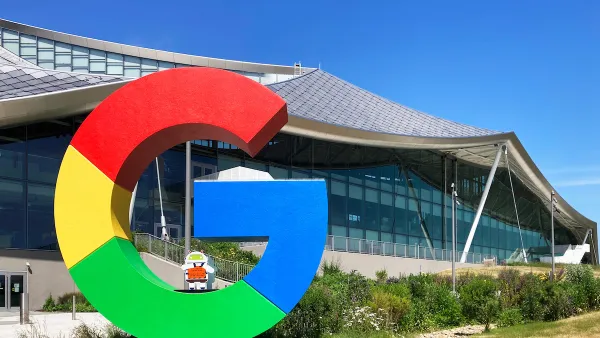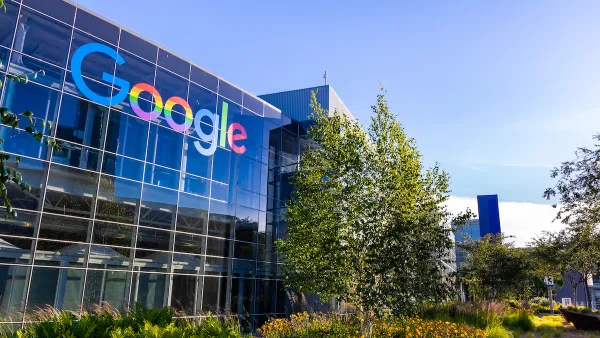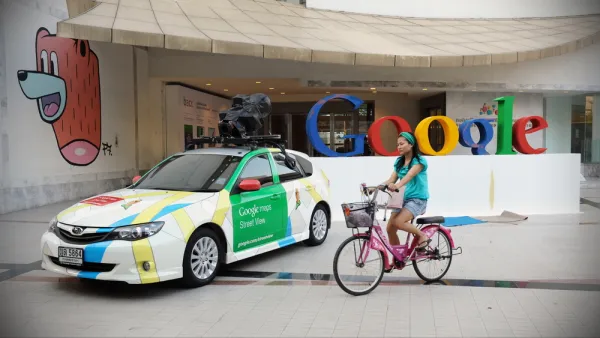Vanity Fair has published the first rendering of the design for the new "Googleplex", the first offices to be built by the tech giant from scratch.
In its offices throughout the world, Google's 35,000+ employees all work in buildings that were remodeled to suit the company's needs. Thus, observers have long wondered what the trendsetting company would build for itself, when given the chance. After two years of false starts, Paul Goldberger reports that Google has partnered with the Seattle-based firm NBBJ, to produce the vision for a new Googleplex "that looks, at first glance, like an updated version of one of the many suburban office parks that Google has made a practice of taking over and re-doing for its own needs."
With many of its tech brethren choosing to situate their offices in urban environments, the suburban nature of the visionary company's headquarters may disappoint some. But according to Goldberger, "[t]he more you look at the complex,...the more intriguing it is." The campus is composed of nine four-story bent rectangles, several with green roofs, that form multiple courtyards. "And cars, the bane of almost every suburban office complex, including the Googleplex, are hidden away."
For Goldberger, the most intriguing aspect of the project is the process and analysis that led to the design. "The layout of bent rectangles, then, emerged out of the company’s insistence on a floor plan that would maximize what [David Radcliffe, a civil engineer who oversees the company’s real estate] called 'casual collisions of the work force.' No employee in the 1.1-million-square-foot complex will be more than a two-and-a-half-minute walk from any other, according to Radcliffe."
“We started not with an architectural vision but with a vision of the work experience,” Radcliffe said. “And so we designed this from the inside out.”
For a zoomable view of the design, check out this post on Quartz.
FULL STORY: Exclusive Preview: Google’s New Built-from-Scratch Googleplex

Analysis: Cybertruck Fatality Rate Far Exceeds That of Ford Pinto
The Tesla Cybertruck was recalled seven times last year.

National Parks Layoffs Will Cause Communities to Lose Billions
Thousands of essential park workers were laid off this week, just before the busy spring break season.

Retro-silient?: America’s First “Eco-burb,” The Woodlands Turns 50
A master-planned community north of Houston offers lessons on green infrastructure and resilient design, but falls short of its founder’s lofty affordability and walkability goals.

Test News Post 1
This is a summary

Analysis: Cybertruck Fatality Rate Far Exceeds That of Ford Pinto
The Tesla Cybertruck was recalled seven times last year.

Test News Headline 46
Test for the image on the front page.
Urban Design for Planners 1: Software Tools
This six-course series explores essential urban design concepts using open source software and equips planners with the tools they need to participate fully in the urban design process.
Planning for Universal Design
Learn the tools for implementing Universal Design in planning regulations.
EMC Planning Group, Inc.
Planetizen
Planetizen
Mpact (formerly Rail~Volution)
Great Falls Development Authority, Inc.
HUDs Office of Policy Development and Research
NYU Wagner Graduate School of Public Service




























